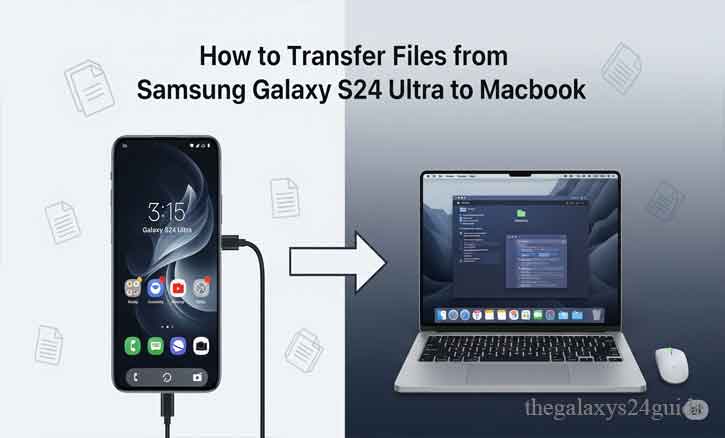
You’ve just captured stunning 200MP photos on your Samsung Galaxy S24 Ultra. Now you want to edit them on your MacBook’s larger display. You plug in your phone, expecting a smooth transfer—only to realize macOS doesn’t play nicely with Android devices.
If this sounds familiar, you’re not alone. Unlike Windows, macOS doesn’t support Android’s default Media Transfer Protocol (MTP). The good news? There are several reliable ways—both wired and wireless—to move your files quickly and safely.
Why File Transfer Between Android and macOS Feels Tricky
The main challenge comes from Apple’s ecosystem design. macOS doesn’t natively recognize Android devices via USB, so a simple drag-and-drop won’t work out of the box.
This leads to frustrations such as connection errors, limited app support, and slower transfer speeds. According to research from Stanford University’s Human-Computer Interaction Group, device interoperability problems can reduce user productivity by up to 27%—and anyone juggling between Android and Mac can confirm that.
Best Ways to Transfer Files from Samsung Galaxy S24 Ultra to MacBook
1. Using Samsung’s Official Tool – Smart Switch for Mac
Samsung Smart Switch is designed for full-device backups and migrations.
Steps:
- Download Smart Switch for Mac from Samsung’s website.
- Connect your Galaxy S24 Ultra via USB-C.
- Select the data you want to transfer (photos, contacts, apps).
Pros: Secure and reliable for large transfers.
Cons: Better for full backups, not quick everyday file moves.
2. Android File Transfer App (Google’s Solution)
Google’s Android File Transfer is the go-to official tool for Mac.
Steps:
- Download and install Android File Transfer.
- Connect your S24 Ultra via USB-C.
- Browse your phone’s files and drag them to your MacBook.
Pros: Simple, free, lightweight.
Cons: Sometimes unstable, limited interface.
3. Wireless Transfer via Google Drive or OneDrive
If you prefer wireless solutions, cloud storage is your best friend.
Steps:
- Upload files from your Galaxy S24 Ultra to Google Drive or OneDrive.
- Open the same account on your MacBook.
- Download the files instantly.
Best for: Small files, documents, or when you need access across multiple devices.
4. Airdrop Alternative – Using Apps Like Snapdrop
Apple users swear by AirDrop, but what about Android? Enter Snapdrop—a browser-based solution that mimics AirDrop for cross-platform sharing.
Steps:
- Connect both devices to the same Wi-Fi network.
- Open snapdrop.net on your Galaxy S24 Ultra and MacBook.
- Send and receive files instantly.
Pros: No app installation needed, super fast.
Cons: Requires stable Wi-Fi.
5. USB-C with Third-Party Software (HandShaker, Commander One)
If Android File Transfer doesn’t cut it, apps like HandShaker or Commander One offer smoother experiences. They provide user-friendly interfaces and extra features like media preview before transfer.
Best for: Users who need a more stable, drag-and-drop style workflow.
Which Method is Best for You?
- Quick photo sharing? > Snapdrop.
- Full backup? > Smart Switch.
- Simple drag-and-drop? > Android File Transfer.
- Cloud convenience? > Google Drive or OneDrive.
Think back to those 200MP photos—you might choose Snapdrop for speed today, but Smart Switch when you’re migrating everything to a new MacBook. The best option depends on whether you value speed, reliability, or flexibility.
Tips for Faster and Safer File Transfers
- Always use high-speed USB-C cables for wired transfers.
- Keep both devices updated for better compatibility.
- Encrypt sensitive files before uploading to the cloud.
Researchers at MIT’s Computer Science and Artificial Intelligence Lab (CSAIL) found that encrypted wireless transfers reduce the risk of data leakage by over 40% compared to unencrypted methods. Security matters, especially when moving personal or work files.
Conclusion
Transferring files from a Samsung Galaxy S24 Ultra to a MacBook doesn’t have to be frustrating. Whether you prefer USB, cloud storage, or wireless solutions like Snapdrop, there’s a method that fits your workflow.
Your photos, videos, and documents deserve to move as freely as you do—so try out these options and find the one that makes your digital life easier.
FAQ
1. Can I AirDrop files from Samsung Galaxy S24 Ultra to MacBook?
No, AirDrop is exclusive to Apple devices. However, you can use alternatives like Snapdrop, which works on both Android and macOS via a browser.
2. What is the fastest way to transfer large videos from Galaxy S24 Ultra to Mac?
A wired USB-C connection with Android File Transfer or third-party software like HandShaker is usually the fastest. For wireless, Snapdrop over a strong Wi-Fi network is reliable.
3. Do I need special software to connect my Samsung Galaxy S24 Ultra to my MacBook?
Yes, since macOS doesn’t support Android’s MTP by default. You’ll need Android File Transfer, Smart Switch, or a third-party alternative.
4. Is cloud storage safe for transferring sensitive files?
Yes, but you should always encrypt sensitive files before uploading. MIT’s CSAIL research shows that encrypted transfers reduce risks of data leakage by more than 40%.
5. Can I sync my Samsung Galaxy S24 Ultra with my MacBook like an iPhone?
Not natively. iPhones integrate with macOS through iCloud and AirDrop. For Samsung devices, you’ll need Smart Switch, cloud services, or third-party apps for similar functionality.
6. Why does Android File Transfer keep crashing on my MacBook?
This is a known issue with the app. Try updating macOS, reinstalling the software, or switching to alternatives like HandShaker or Commander One for smoother performance.
7. What’s the easiest method for non-tech users?
Google Drive or OneDrive is the most beginner-friendly. Just upload files from your Samsung and download them on your MacBook—no cables or complex setup needed.